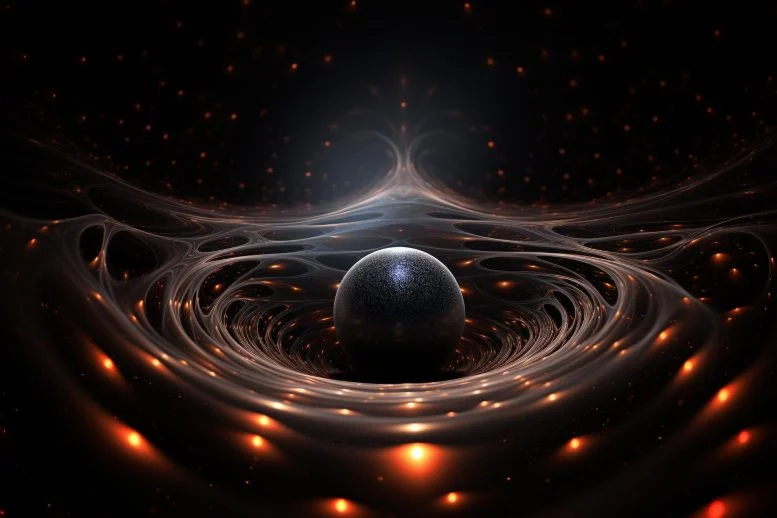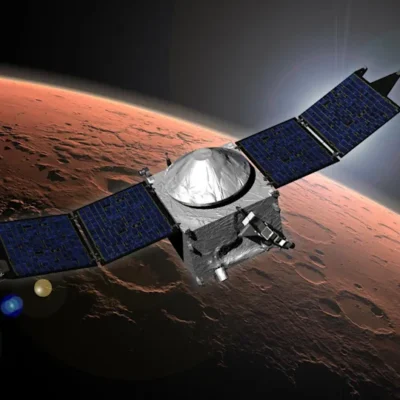A groundbreaking advancement in adaptive optics technology is poised to revolutionize gravitational-wave detection, enabling LIGO and future observatories like Cosmic Explorer to achieve unprecedented capabilities.
Enhancing Gravitational-Wave Observatory Reach
A recent study published in Physical Review Letters highlights a significant breakthrough in optical technology that could greatly extend the reach of gravitational-wave observatories such as LIGO (Laser Interferometer Gravitational-Wave Observatory). Led by Jonathan Richardson from the University of California, Riverside, the research shows how this innovation could enhance current detection abilities and set the stage for next-generation observatories.
Since LIGO’s first detection of gravitational waves in 2015, it has transformed our ability to observe the universe. Planned upgrades to its 4-kilometer detectors, along with the proposed construction of the 40-kilometer Cosmic Explorer, aim to extend gravitational-wave detection back to the universe’s earliest moments—before the first stars formed. However, achieving this goal necessitates pushing laser power levels beyond 1 megawatt, significantly surpassing LIGO’s current capabilities.
The study introduces a low-noise, high-resolution adaptive optics system designed to address this challenge. This technology corrects distortions in LIGO’s large 40-kilogram mirrors, which occur as laser power increases and heats the system. By facilitating extreme laser power levels, this breakthrough could substantially enhance the sensitivity of gravitational-wave detectors, bringing us closer to capturing the universe’s most distant and elusive signals.
Richardson, an assistant professor of physics and astronomy, explains the study’s findings in the following Q&A:
What Are Gravitational Waves?
Gravitational waves represent a novel way to observe the universe, as predicted by the equations of general relativity. When massive objects accelerate or collide, they create distortions in the fabric of spacetime that propagate outward like ripples on a pond, traveling at the speed of light. These distortions are gravitational waves, which, like electromagnetic waves, carry energy and momentum. We have amassed a wealth of information about the extreme astrophysical objects, such as black holes, that produce these waves and the underlying physics of the spacetime they traverse.
How Does LIGO Work?
LIGO is among the largest scientific instruments globally, comprising two 4-kilometer-long laser interferometers. One is located in inland Washington State, while the other is near Baton Rouge, Louisiana. These sister sites work in tandem, passively listening for any distortions in spacetime caused by gravitational waves as they propagate through the Earth.
So far, LIGO has detected around 200 events involving the collision and merger of stellar mass compact objects. The majority of these events have been mergers of two black holes, but neutron star mergers have also been observed. I am hopeful that one day we will detect a source that is entirely unexpected and unpredicted. Historically, each time we have developed electromagnetic telescopes capable of observing a previously unseen wavelength of light, we have discovered new celestial objects unique to that wavelength. I anticipate the same will hold true for gravitational waves.
Tell Us About the Instrument You’ve Developed That Has LIGO Applications.
At UCR, my focus is on creating new types of laser adaptive optical technology to address fundamental physics limitations that affect the sensitivity of detectors like LIGO. Most gravitational wave signal frequencies observable from the ground are limited in sensitivity due to quantum mechanics, specifically the quantum properties of the laser light used in the interferometer to bounce off mirrors. The instrument we’ve developed is designed to deliver precise optical corrections directly to the main mirrors of the LIGO interferometers. Positioned just centimeters from the reflective surfaces of these mirrors, it projects low-noise corrective infrared radiation onto them. This is the first prototype of a new approach using non-imaging optical principles, which has never been applied in gravitational wave detection before.
What Is Cosmic Explorer?
Cosmic Explorer is the U.S. proposal for a next-generation gravitational-wave observatory, succeeding LIGO. It will be ten times the size of LIGO, featuring 40-kilometer-long interferometer arms, making it the largest scientific instrument ever constructed. When fully operational, these detectors will be able to observe the universe at earlier epochs than when the first stars are believed to have formed, at about 0.1% of the universe’s current 14-billion-year age. This will allow us to capture a snapshot of the universe in its early developmental stages.
What Does the Research Paper Discuss?
The paper outlines the importance of high-precision optical corrections in broadening our gravitational-wave view of the universe. It details the potential impact of the new technology on the next generation of LIGO and beyond. Crucially, the paper demonstrates that this type of technology is both necessary and sufficient to enable significantly higher levels of circulating laser power in the LIGO detectors than ever before. We anticipate that this technology, along with future iterations, will facilitate increased power in the interferometer.
Why Is This Research Important?
This research promises to address some of the most profound questions in physics and cosmology, including the rate of the universe’s expansion and the true nature of black holes. Currently, two conflicting measures exist regarding the local expansion rate of the universe, which gravitational waves could help resolve. They will also provide exceptionally precise measurements of the dynamics around the event horizons of black holes, enabling direct tests of classical general relativity and alternative theories.
Reference: “Expanding the Quantum-Limited Gravitational-Wave Detection Horizon” by Liu Tao, Mohak Bhattacharya, Peter Carney, Luis Martin Gutierrez, Luke Johnson, Shane Levin, Cynthia Liang, Xuesi Ma, Michael Padilla, Tyler Rosauer, Aiden Wilkin, and Jonathan W. Richardson, 5 February 2025, Physical Review Letters.





